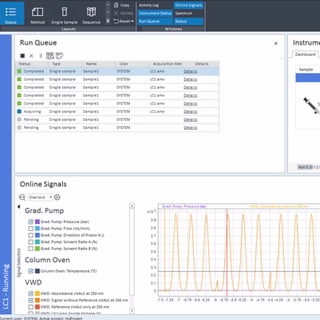

- #Agilent chemstation data export full#
- #Agilent chemstation data export software#
- #Agilent chemstation data export plus#
- #Agilent chemstation data export series#
Since it is possible that compound name hits could occur at odd RTs, it is important to narrow it to an expected RT range to reduce error in normalization values. Press enter.Įnter your standard(s) name: ribitol|adonitol This will mean they will be regarded as the same compound. You can use more than one name for the standard as input by separating them with a pipe ( |). You CANNOT use special characters and spaces as input, and the search is NOT case-sensitive.
#Agilent chemstation data export plus#
This is where you decide what is the plus minus range of your RT to be considered an identical hit for alignment. It should look something like this:Įnter the main directory: C:\experiment1\main_directory HINT: you can drag and drop your main directory into the console to easily generate the path.
#Agilent chemstation data export full#
Input the experiment directory's full path as the main directory and press enter.
#Agilent chemstation data export software#
Chemstation Software DownloadĬhemStation has a command line interpreter and can run macros. Other special registers exist for the UV-vis implementation of the software. Two of the more important registers are CHROMREG and CHROMRES, the chromatographic data registers. Two versions are available: one ('online') in connection with the modules of the HPLC chain is designed to control instruments and run experiments, and the other ('offline'), without a connection with the HPLC chain, is designed to analyze data.ĬhemStation is structured around a number of registers. Software systems can exhibit massive numbers of execution paths, and even. It is an evolution of the Hewlett-Packard ChemStation System.Įxporting data from Chemstation to Excel.
#Agilent chemstation data export series#
Agilent ChemStation is a software package to control Agilentliquid chromatography, gas chromatography, and ultraviolet-visible spectroscopy systems such as the 1050, 11 Series HPLC system and the 84 single-beam diode array detector spectrophotometers.


 0 kommentar(er)
0 kommentar(er)
